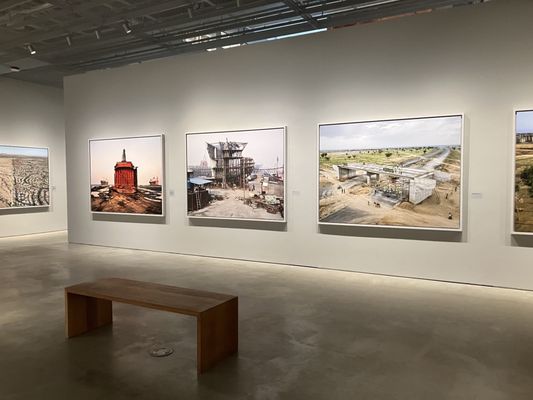International Center of Photography Museum
Photography museum & school with rotating exhibits, library & cafe
Photography museum & school with rotating exhibits, library & cafe
























"At the ICP I saw Graciela Iturbide’s first New York City retrospective, Serious Play, which hangs more than 200 images through January 12, 2026 and documents the diversity of life in Mexico—from communal and indigenous communities to the Sonoran Desert and human interaction with natural environments." - Charlie Hobbs

"Just below Delancey on Essex on the Lower East Side, the new-ish headquarters includes a school, library, darkrooms, archives, and studios, but it’s the beautiful, abundantly lit public gallery that shines. Cavernous yet thoughtfully sequenced, with skylights, massive windows, and ample floor space that keeps attendance feeling sparse, the museum lets you move as you like—every juxtaposition and sequence placed so the work sings." - Charlie Hobbs, Andrea Whittle

"Quiet, Intimate Photography Museum For photography and art enthusiasts visiting NYC, don't overlook the International Center of Photography. Founded in 1974, ICP is conveniently located in Midtown Manhattan (42nd Street and Sixth Avenue). It's a world-leading museum, school, and research center for professional photographers, enthusiastic amateurs, artists, scholars, and students. The museum features a regular rotation of carefully curated photography exhibits focusing on historic as well as contemporary artists. Recent exhibits include Atget, Roman Vishniak, Elliott Erwitt, and Wang Qingsong. The museum is intimate and uncrowded, allowing visitors to savor the artwork in quiet contemplation. Plus, ICP offers a great gift store for photographers with a huge range of specialty books and fun camera-related gear."


"A cultural institution where a planned events-space partnership tied to the restaurant group has been scrapped in the wake of the partners' split, reflecting how some ancillary projects were halted even as other expansions proceed." - Amanda Kludt

"Planned as part of Essex Crossing, the upcoming International Center of Photography had two floors slated for takeover by Humm and Guidara's Make It Nice, but the developer Prusik Group says the duo pulled out because of project delays and is now looking for a new operator." - Stefanie Tuder